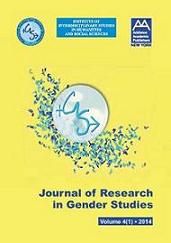Émancipation sexuelle et obstacles paratextuels: Le cas d’André Gide
Sexual Emancipation And Paratextual Obstacles: The Case Of André Gide
Author(s): Frédéric CanovasSubject(s): Gender Studies
Published by: Addleton Academic Publishers
Keywords: Gide; homosexuality; paratext; coming-out; symbolism
Summary/Abstract: In his book dedicated to the study of the paratext in 1987, Gérard Genette refers many times to Gide’s texts. Gide’s work presents indeed a rich and fascinating reservoir for paratext studies. Curiously, Genette ignores the very first text of Gide in favor of those written at his maturity. Or, it is in the texts of the first ten years, from 1892 to 1902, that Gide used a paratextual apparatus, particularly abundant and complex. A first glance permits us to distinguish a significant evolution of paratext in the period which opens with Le Voyage d’Urien. The latter tends to proliferate in the texts that precede the public assumption of homosexuality of Si le grain ne meurt and Corydon. The range of paratext dimension of these two texts opens towards the lecturer in the simplest way: a title and a foreword in Corydon, a title for Si le grain ne meurt. Where are the preliminaries, the epigraphs, the dedications, the references, the forewords that encircled the stories as to protect them and delay the reader entering the reading? What if there was a connection between this kind of proliferating discourse located within the edges of the text and the fact that these texts, which precede the public assumption of homosexuality, all conceal a dark secret just waiting to be exposed to the light but has terrible time to be articulated in writings? In other words, the paratext plays in Gide’s work an ambivalent role, insisting sometimes to delay, reduce or contradict, sometimes to anticipate, exaggerate and confirm what the narration reveals or attempts to reveal. These are the questions to which my paper attempts to provide answers.
Journal: Journal of Research in Gender Studies
- Issue Year: 4/2014
- Issue No: 1
- Page Range: 280-289
- Page Count: 10
- Language: French
- Content File-PDF

